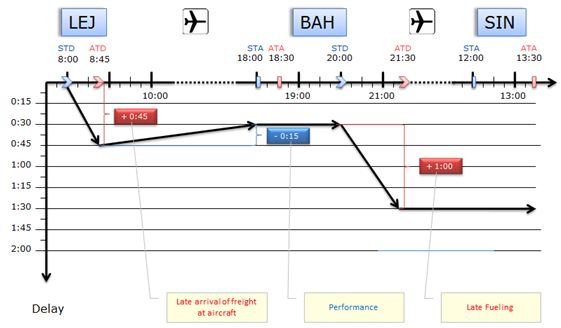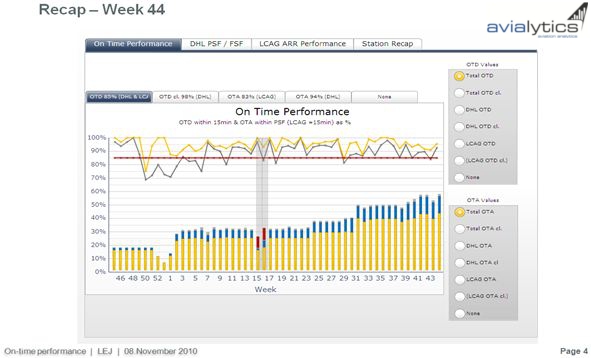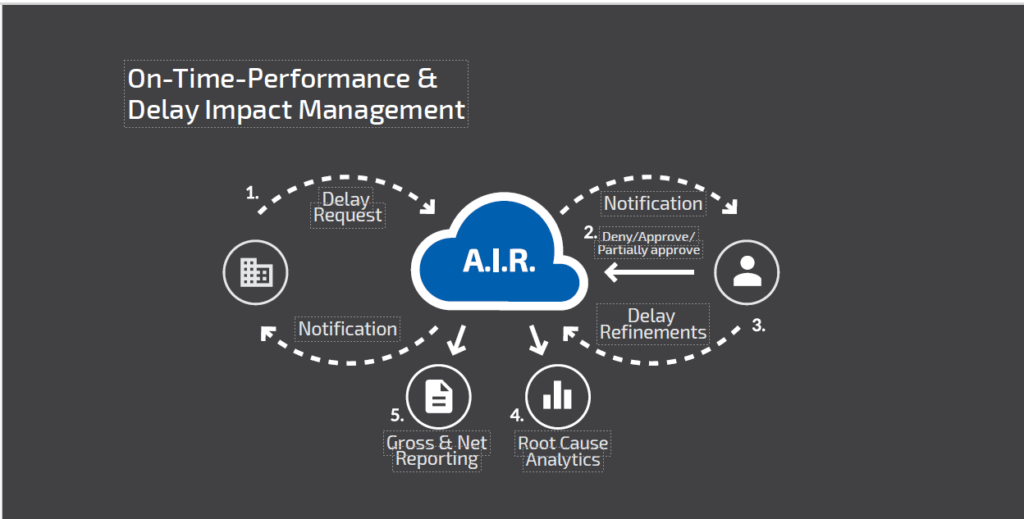On-Time-Performance and Delay Impact
avialytics’ On-Time-Performance / Delay Impact Management (OTP-DIM) solution allows operators to predict and control any and all aviation-scheduling situations that may arise. It visualizes the impact of a potential delay and aids economic decisions regarding
additional fuel costs and/or the acceptance of a delay to serve a greater good.

How it Works
1. Delay Request From network Station
• Request to delay a flight for a certain amount of time due to a specific reason
• Automatic operator notification of the request
2. Delay Request Handling
• Approve, reject and adjust delay requests based on real-time dependency information
• Management of actions necessary in case of a delay
• E-mail notifications are automatically generated
• The delay request status is displayed in the InfoBOX flight overview
3. Delay Refinement
Standard delay-information framework will be enhanced with details like:
1) Which flight caused a reactionary delay on an individual flight
2) Which flights will be affected by the delay of the actual flight
3) Refinement of the delay causes and assignment of responsibilities
4) Creation of follow-up actions

Robotic Assistant
4. Root Cause Analytics and Learning Opportunities
• Flight and non-flight related root causes can be assigned to delays, along with the durations thereof.
• Gross and net delay times are calculated along with recovery efforts based on minimum turnaround times to identify real performance and critical paths.
• Recovery & Best Practice Workflow can be initiated and assigned to a specific person in the organization to track progress and ensure lessons learned.
5. A.I.R. Data Distribution to Gross and Net Reporting Tools
Benchmark functions include:
- Flight Statistics
• Define and prioritize specific information about how a flight is considered.
• Each flight can be excluded from OTP or included as not delayed (= cleared). Cancellation(s) can also be set with reason as well as Full and Partial Service Failures (FSF/PSF).
2. OTP Reporting
• Review the list of delays occurring within a given week, as well as the reasons, duration, and PSF-/FSF-/AdHoc-flags of each event.
• Service Failure Events & Flight Changes
• Delayed flights will be grouped by category and listed alongside their service failure threshold, reason, and ancillary comment information.
3. Decision Support
• Data mining algorithms to identify and cluster delay causes and context.
No two delays are exactly the same. In some cases, a delay is acceptable or even desirable under specific conditions. It’s not only the number of minutes which turns a late arrival into a relevant delay. Rather, the real impact on the organizations’ schedule as well as implicated fuel consumptions, crew rotation etc. should be considered. What if your aircraft is ten hours delayed, but all your cargo arrives at its final destination on time? Conversely, who is liable if a 10-minute delay, defined as being On-Time, causes 30% of the PAX to miss their connecting flights? Will you measure a station’s tardiness by total sum of delayed minutes, or do you differentiate between net and gross delays, taking into consideration reactionaries or root causes? How does your organization learn from historic events, and how are the analytics results used?

